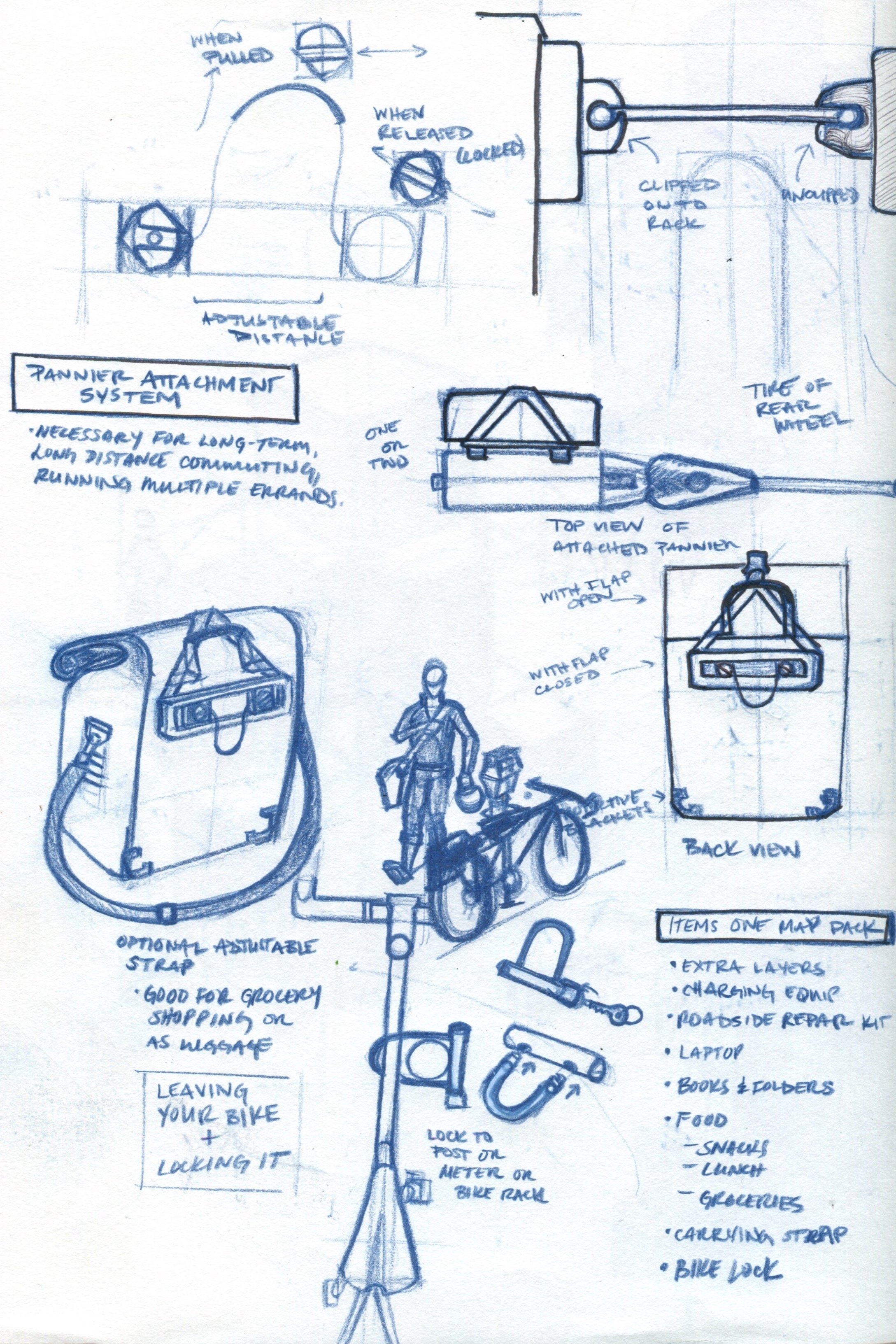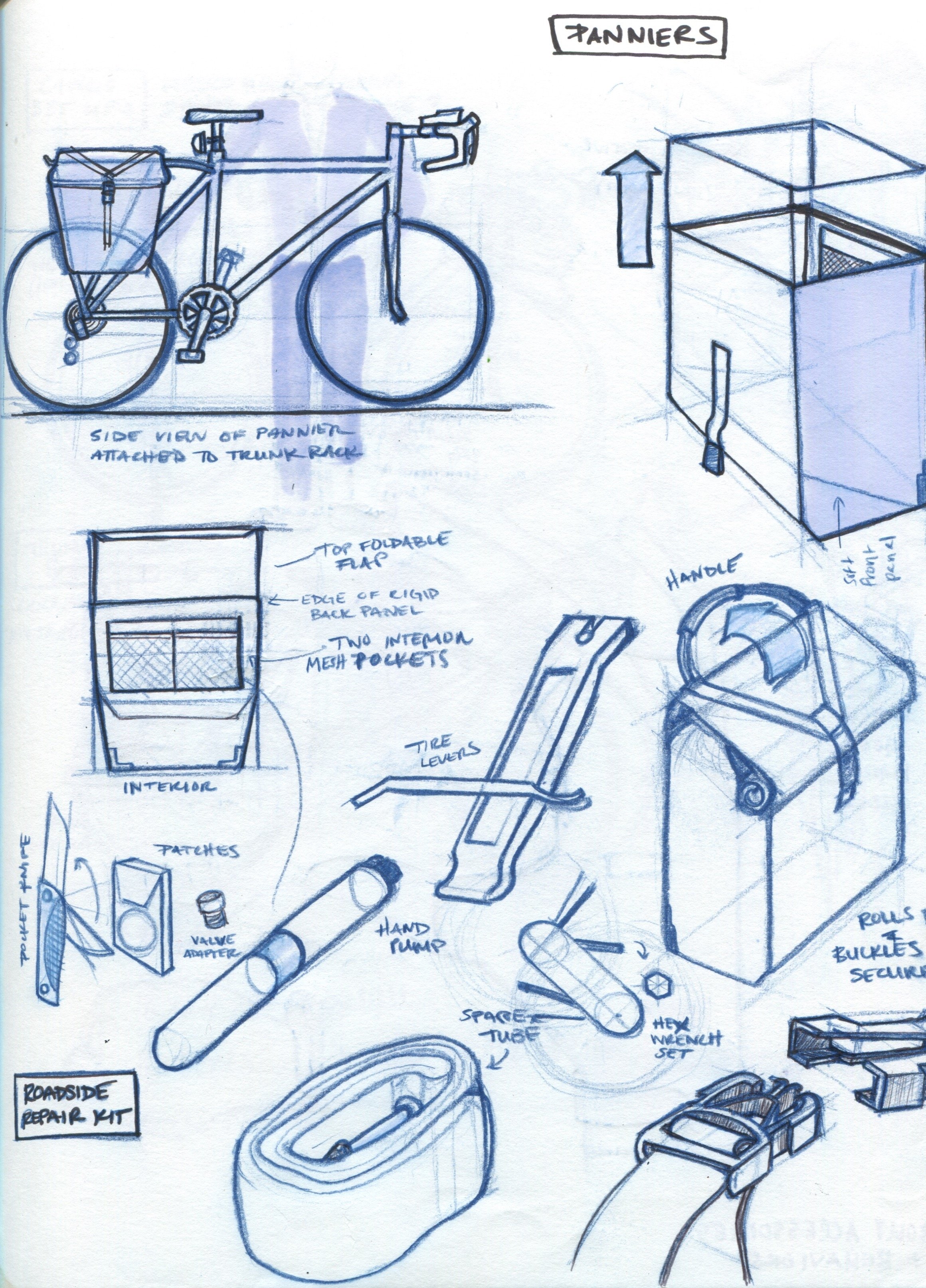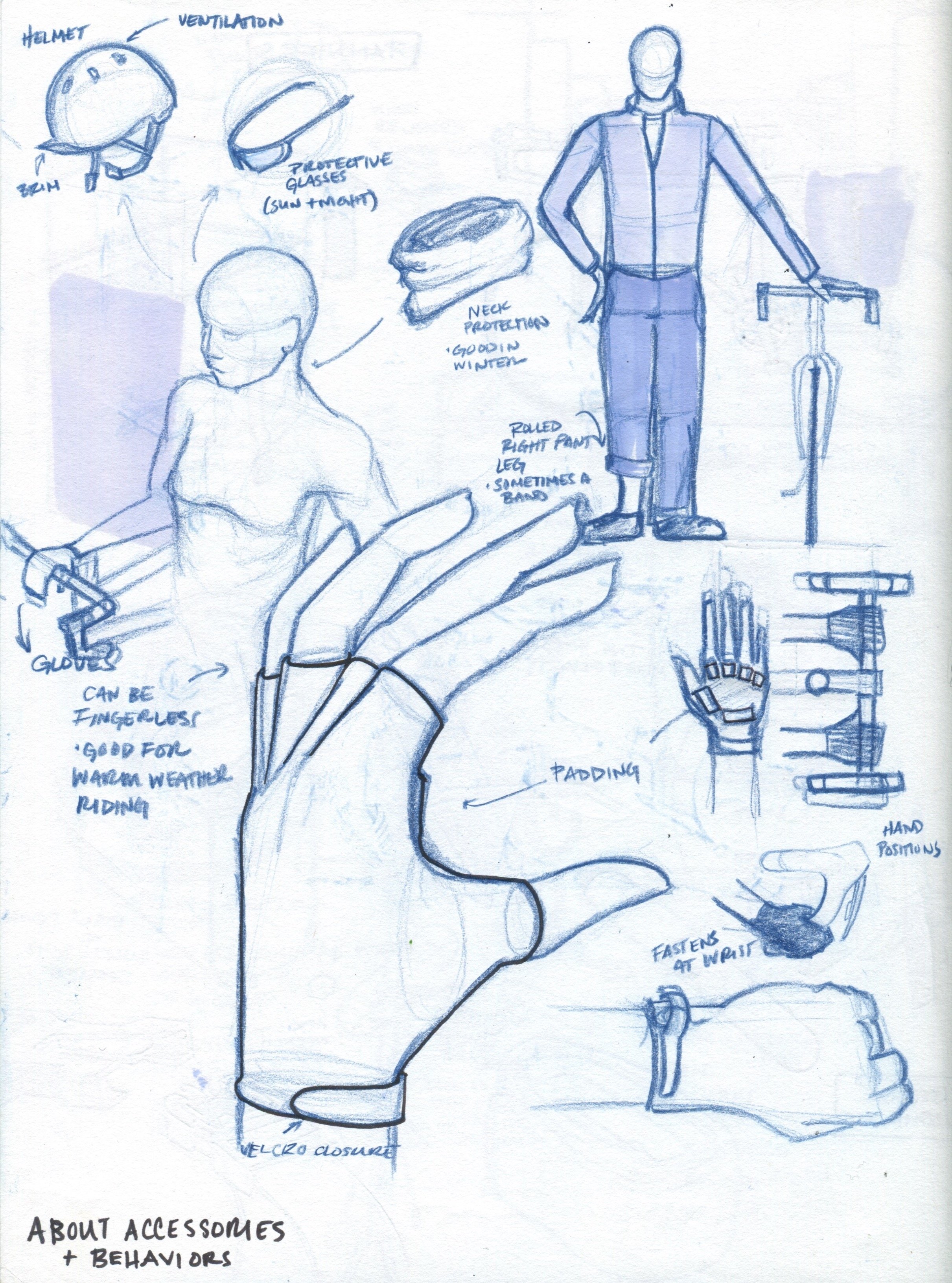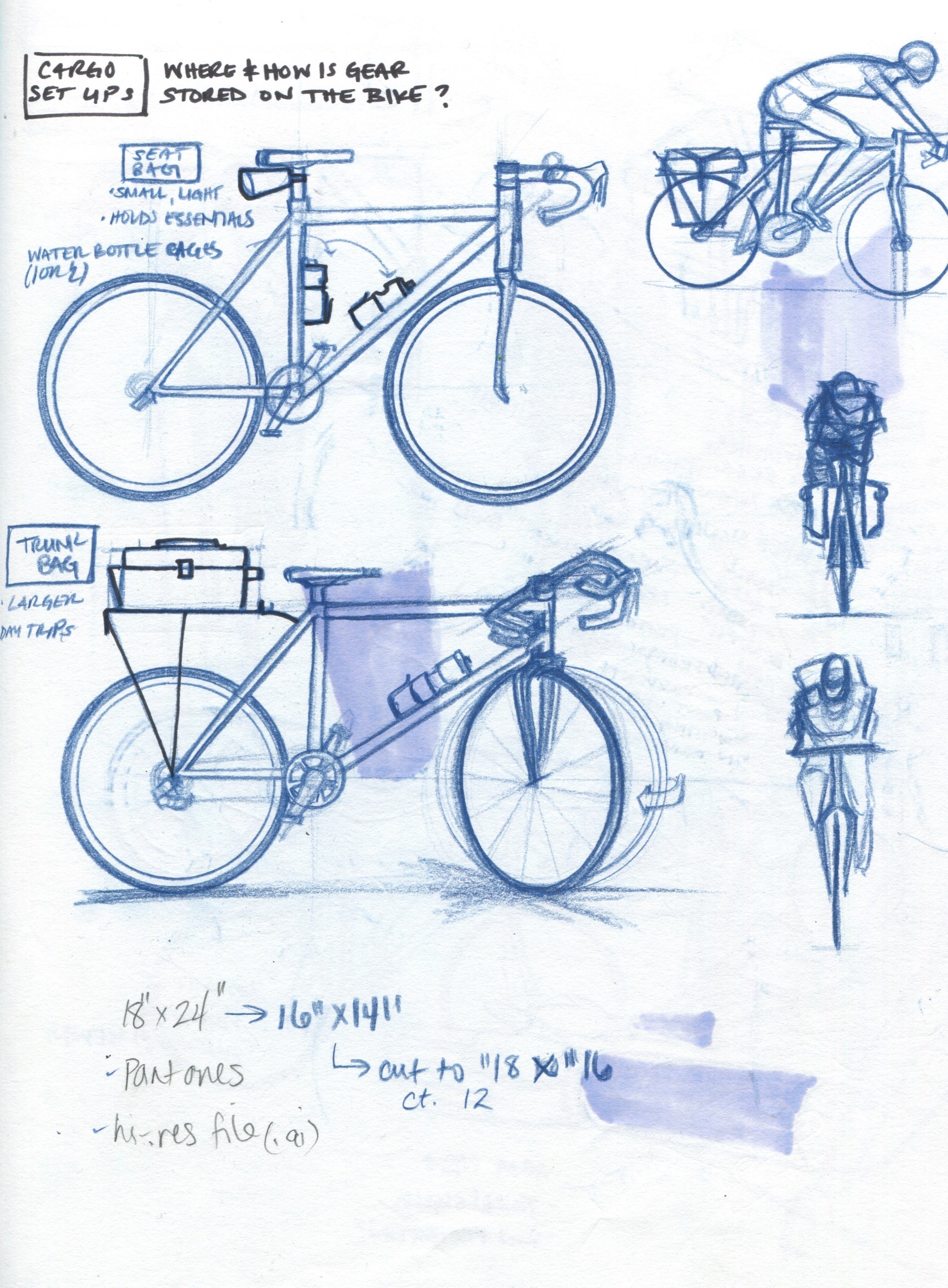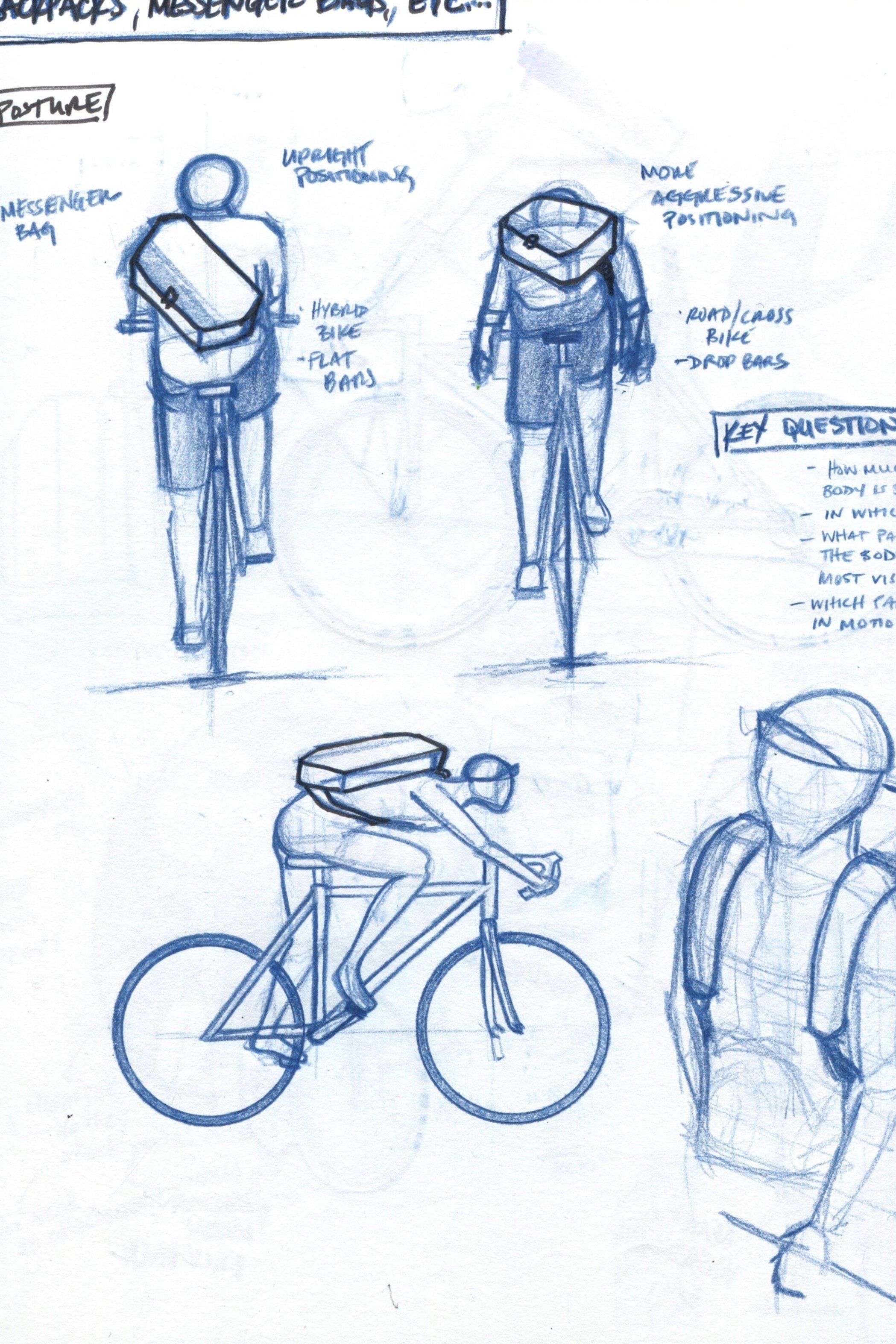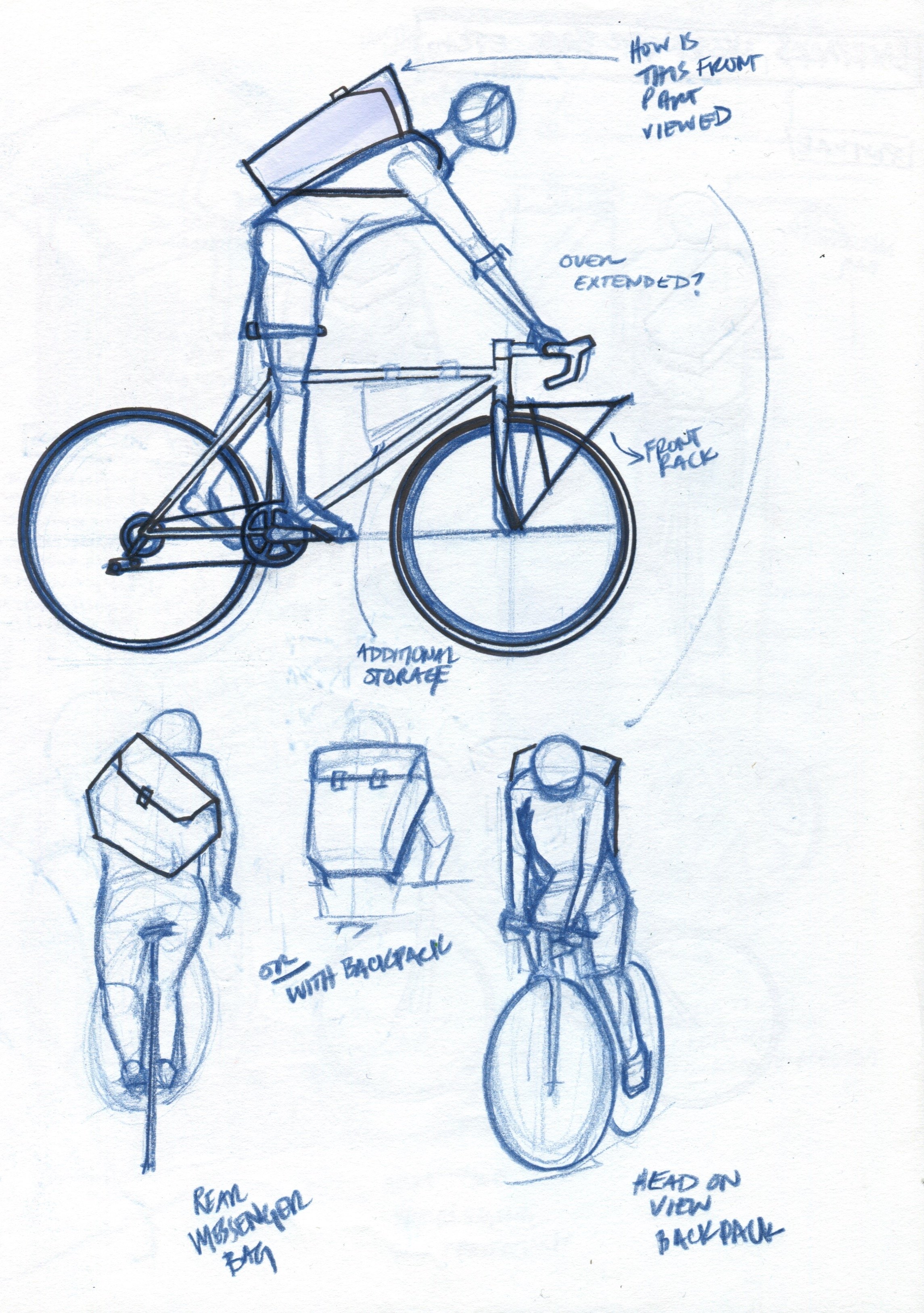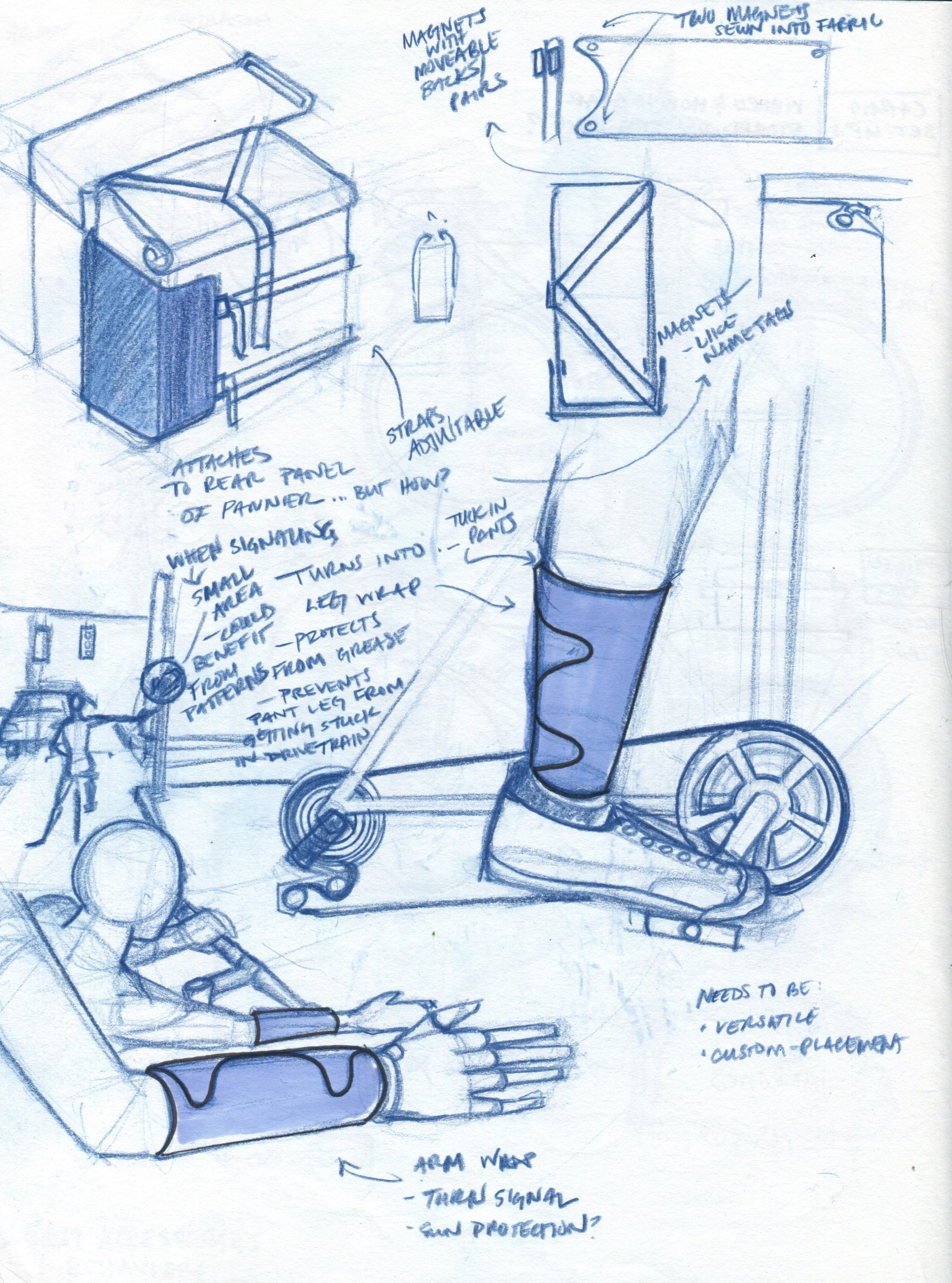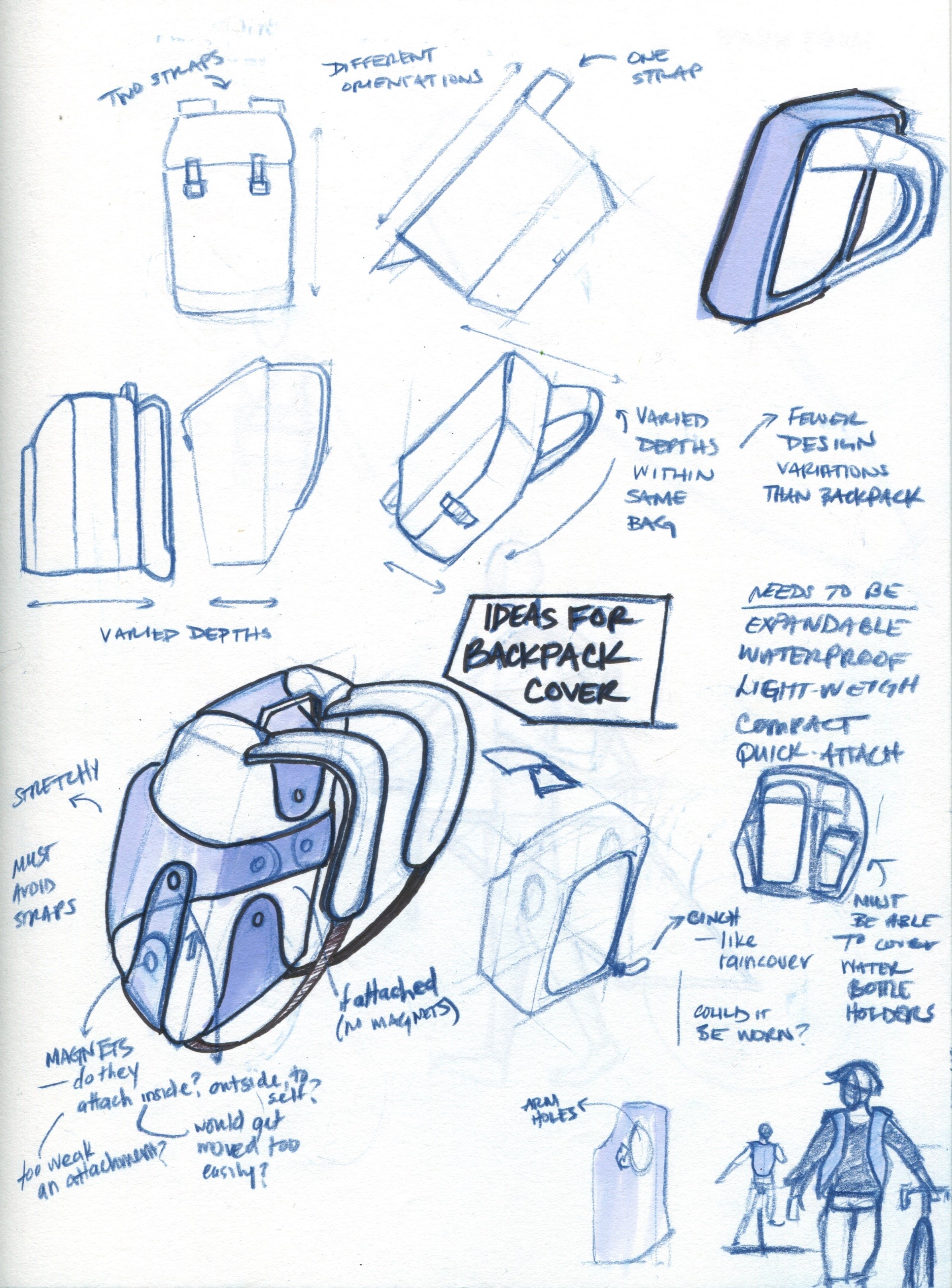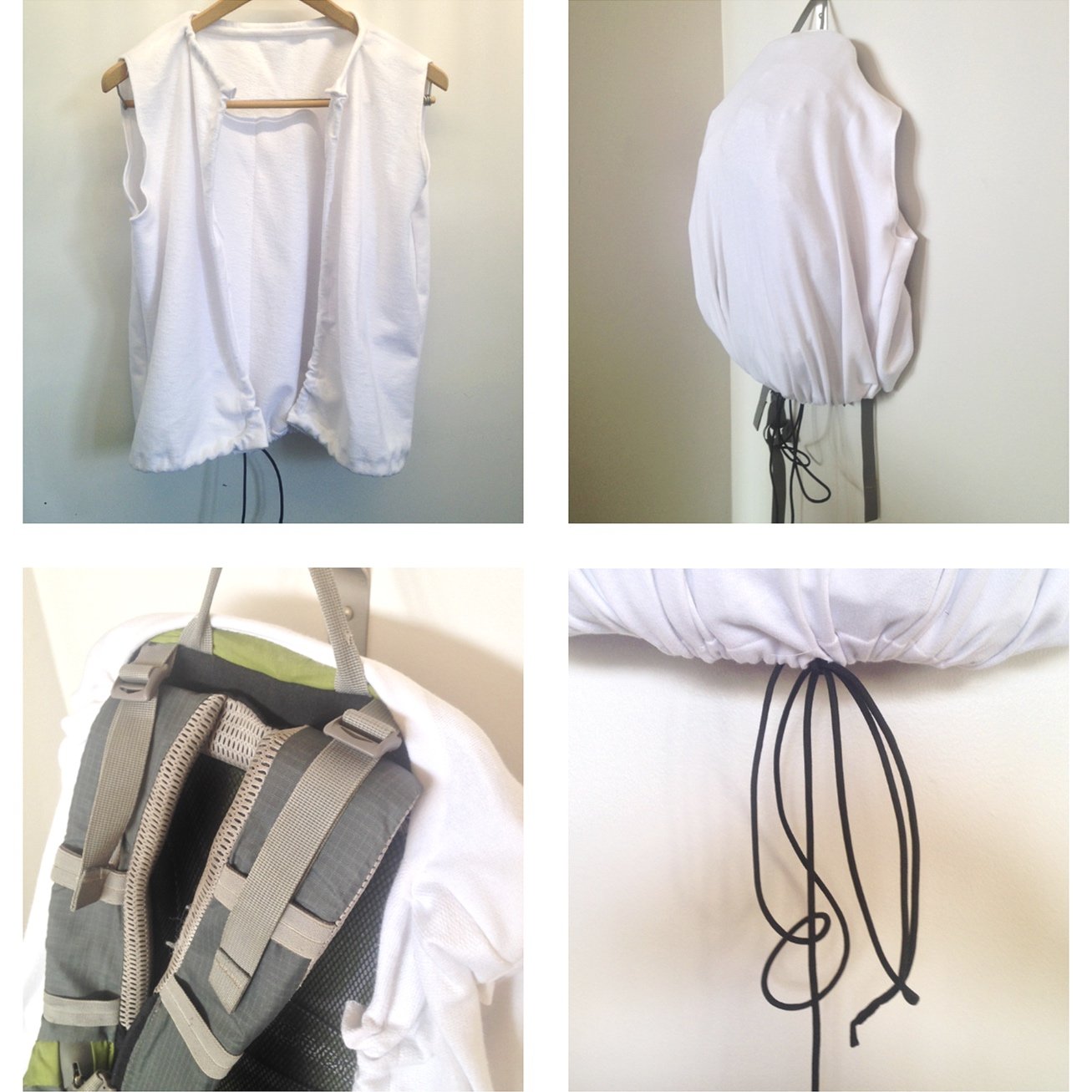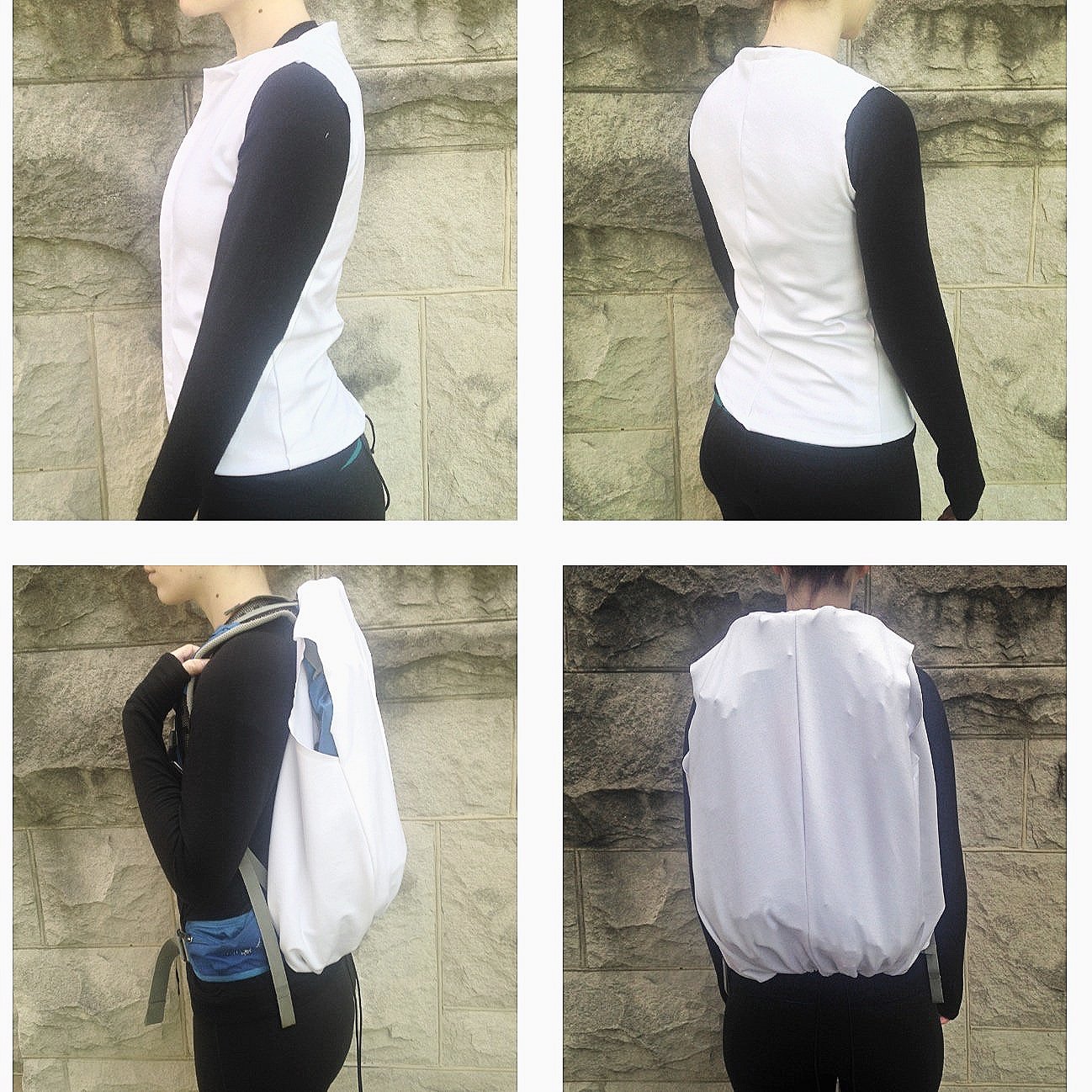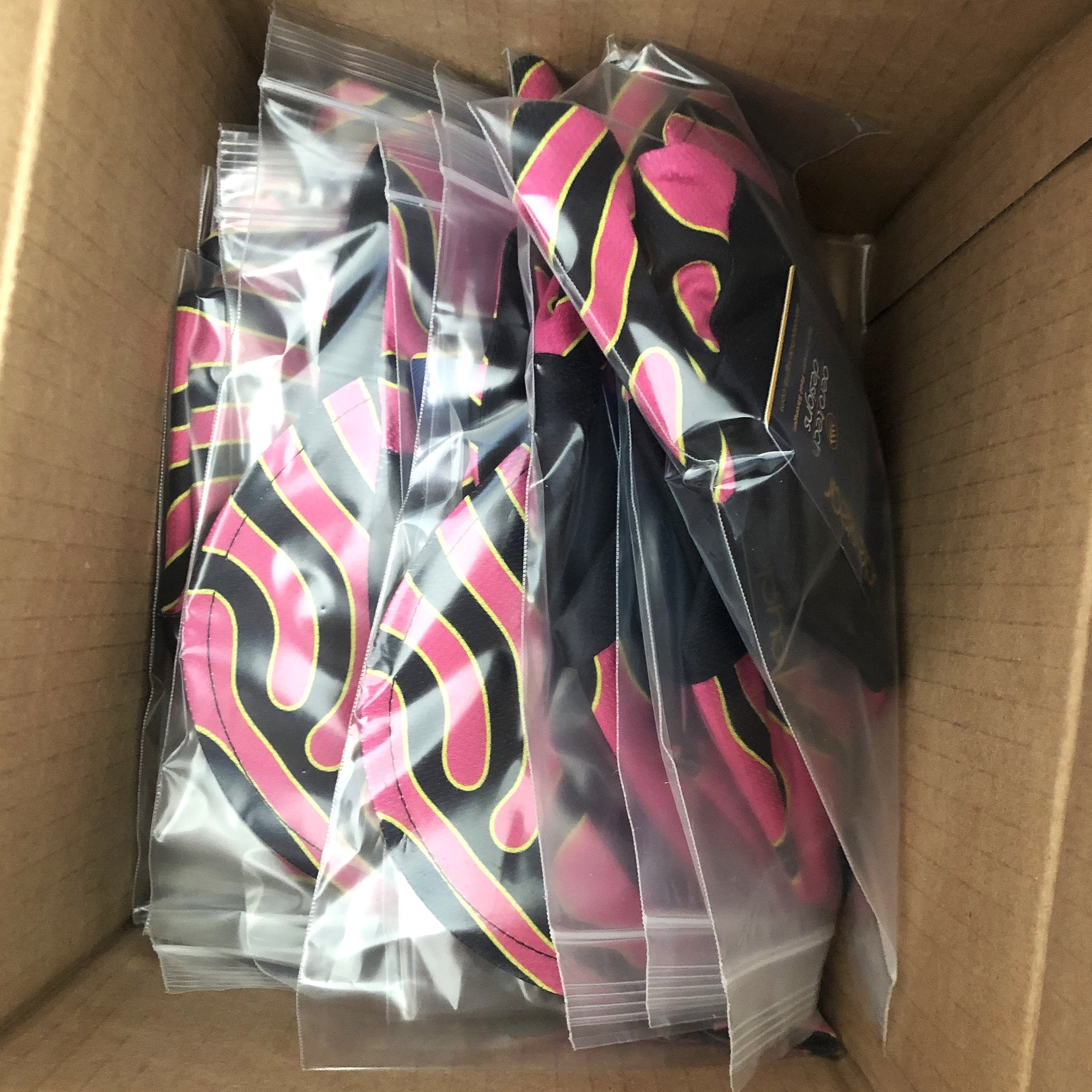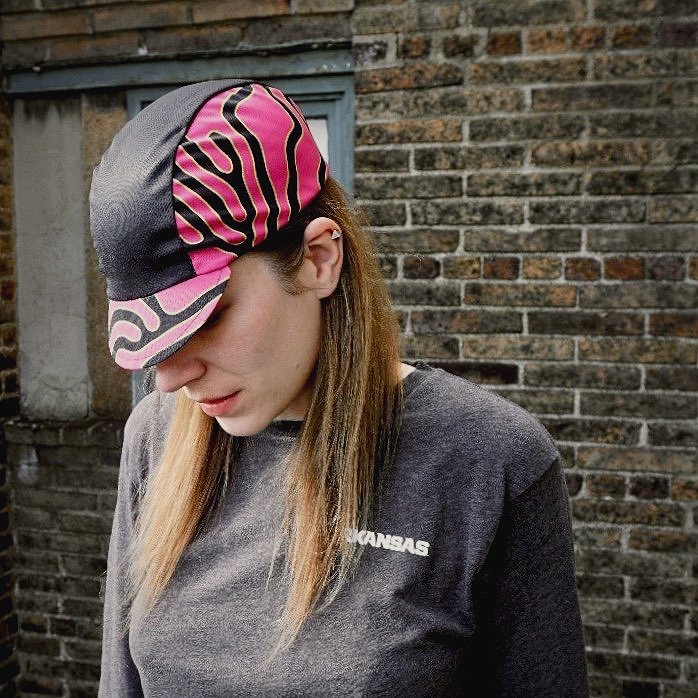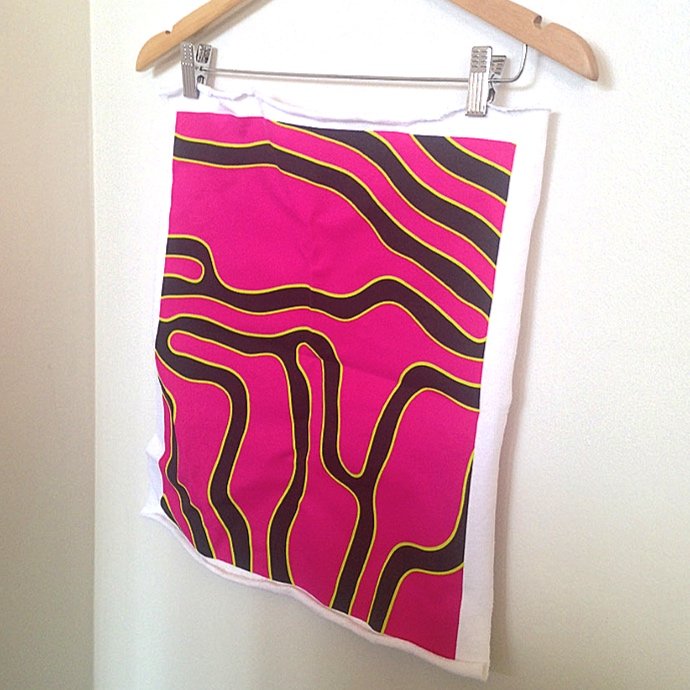
The Prototype
Part II of Protection Through Identity and Part I of an entrepreneurial adventure.

An exploration of form and function
Having a high-visibility pattern to work with is merely step one. The next step is to research how to apply this pattern to the world of cycling in a way that would encourage its adoption and release into the wild.
Similar to my approach in Part I of this project, I began by sketching. First, I investigated what products are already being adopted by cyclists from clothing to bike bags to tools. Next, I began to study cyclist behavior and the various postures and gestures exhibited while in motion.
This study also helped me to see what parts of the cyclist’s body are visible to drivers and what items might obscure the body in detrimental ways. While I initially had been thinking of creating a jacket because the largest part of the human form is the torso, my studies of the cycle-commuter had me reconsider such a straight-forward solution. I noticed that items such as messenger bags and backpacks — common components of a commuting outfit — cover large portions of the cyclist’s body and would therefore, obscure large portions of the jacket and the high contrast patterning and coloration it exhibits.
This discovery provides two options for approaching the challenge: Allow their bag in its existing form to become part of the pattern or create an attachment or cover that the cyclist can put over their bag to give it the requisite patterning and coloration.
Ultimately, I chose to prototype a cover for the bag that can be worn by the cyclist when the bag is not present in an effort to not limit the experience for the cyclist without a backpack or messenger bag. An additional benefit to this approach is its use-versatility that would appeal to the style and ethos of the cycling community.
Making the thing
To see if this vest to pack cover was at all viable, I needed to bring my sketches to life.
The most important considerations were the material and the pattern application. Based on cycling products on the market, an activewear, stretch fabric would be a necessity; however, it would be difficult to apply the pattern to such a fabric without expensive sublimation equipment. Other avenues I explored for the application process also failed to yield any viable options, mainly due to the need for pattern and color accuracy. Ultimately, I decided to partner with a local silk-screening company to have the Pantone-accurate patterns applied to a bolt of simple white cotton as a proof of concept (shown at the beginning of this page).
Due to time constraints and delays in the printing process, I opted to make two prototypes of the vest without the patterns applied: one from the same white cotton I was having silk-screened with a cotton drawstring and the other in a white activewear, stretch fabric that would be closer to what I had in mind for it, with a shock cord drawstring.
Satisficing
In the end, the biggest challenges were overcome in time for the final show. Although the printed fabrics did not arrive in time for me to create a high-visibility version of the vest, I was still able to road test the pattern by sewing a large patch of it onto the back of an old, black sweatshirt. The road test was successful and took into account different speeds, lighting, and distortions from windshield glass.
While I intend to pursue the vest prototype in the future, I determined that I would need to find a more time and cost effective way to get these patterns onto the roads. As I am not a professional clothing maker, and certainly not a professional cycling gear designer (yet), I once again partnered with a local manufacturer offers custom, color-accurate cycling gear. As a test of their services and a promotion of sorts for this new venture I am undertaking, I had them produce cycling caps with the most successful pattern. Since cycling caps should be wore under helmets, they are not the ideal use of the patterns; however, they are trendy within the cycling community, size agnostic, and cheaper to produce than jerseys or jackets.
I began selling the caps in the Spring of 2021 and my client list is growing! My next step will be to move into jerseys as there has been significant interest. I also intend to expand beyond the borders of Pittsburgh and begin developing patterns for other cities and even other seasons.
If you are interested in learning more about this burgeoning business, don’t hesitate to reach out.
